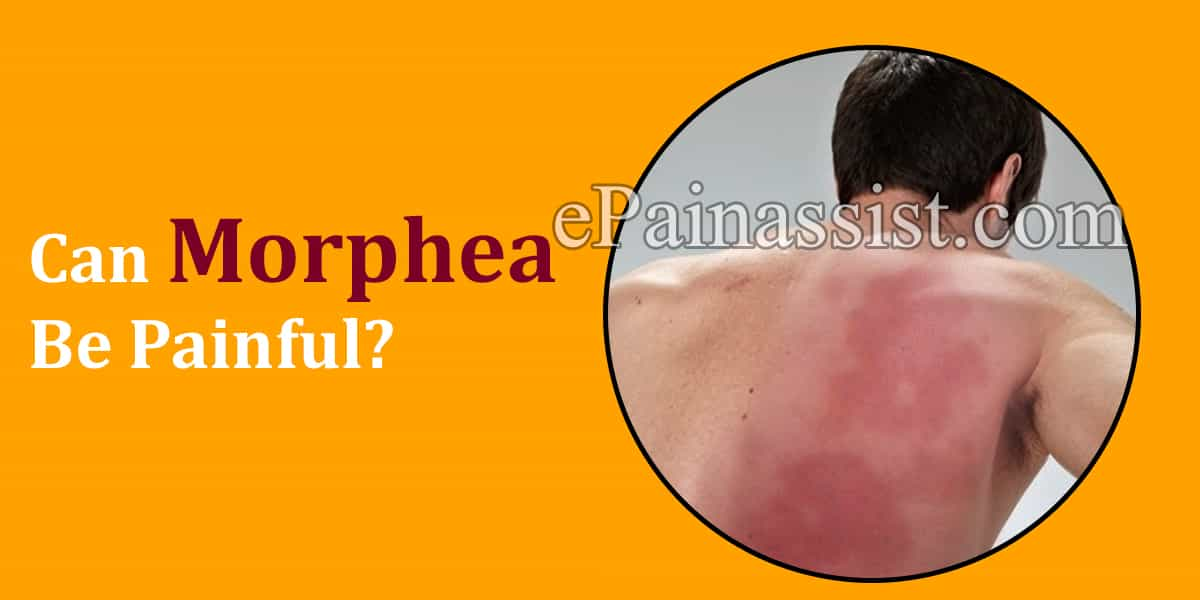Morphea is a rare inflammatory condition of the skin. It is represented by thick, firm and hard lesions that range from reddish patch to discolored oval-shaped lesions. It is usually painless and limited to the skin and underlying fat. It can be itchy and ugly in appearance. It is supposed to be caused by autoimmunity, injuries, infections, exposure to radiation, certain medicines and others. It resolves on its own in three to five years. However, they may relapse again. It can be treated with creams, light therapy or systemic immunosuppressive drugs.
Can Morphea Be Painful?
Morphea is represented by its typical lesions. The lesions are hard, firm, or thickened patches that have lightened center. They are oval shaped and usually limited to the skin. They appear on abdomen, trunk, chest or back and may involve face, neck or limbs. They lead to the loss of hair in the affected area. Morphea is usually painless. They sometimes become so hard that they may involve the tissues of bone or muscles leading to joint contractures and muscle wasting. This may thereby result in disability or cosmetic deformity.

Morphea is a rare autoimmune condition that leads to the fibrosis of the skin. This autoimmune condition is meant for protection against cancer, injury, infection, etc. that mistakenly attacks the skin. It is a type of localized scleroderma. It is a self-limiting condition that is confined to the skin and rarely extends to muscles and bones. It tends to end in three to five years.
Morphea usually develops in females more than males that begin in their childhood. It is an inflammatory condition of the skin which is usually limited to the skin. Its lesions appear on the abdomen, trunk, or back, sometimes on face, neck, hands or feet. The lesions lead to the hardening of the skin and other tissues underneath the skin.
Types Of Morphea
Morphea show the different intensity of its lesions in different types.
Plaque Morphea– it is the commonest type of morphea that causes three or four lesions. It is painless and itchy, in certain cases.
Generalized Plaque Morphea– it causes widespread large lesions that join together. It extends to deep tissues and may cause disfigurement.
Pansclerotic Morphea– it is fast progressive morphea that involves the skin of the entire body except for hands and feet. It is treated with aggressive medical intervention.
Linear Morphea– it spreads as a single band and seen in leg, or arm or forehead as discolored or hardened skin. It is the most common type in school children and it may extend to muscles and bones causing deformities.
Causes Of Morphea
There are no clear reasons that can cause morphea. It is supposed that immune disease can attack the healthy skin mistaking it a foreign body. Collagen is found in the skin to provide structural support to the skin. In this disease, the skin gets hard and thickened due to excess production of collagen. It is not a contagious disease and it does not spread with touch or other means. Autoimmunity, trauma, injury, infection, cancer, abnormal genes, radiation, and medicines can be the causes of morphea.
Complications Of Morphea
Generalized morphea may cause fatigue and pain in the joints. The joint contractures and muscle wasting can add on to the pain due to restricted movement and shortening of the limb. Pansclerotic morphea can also cause difficulties in breathing if the skin of the chest is affected. Linear morphea may affect face or scalp that may lead to seizures or neurological problems. It may sometimes cause damage in the eyes.
Conclusion
Morphea is a rare disorder of the skin characterized by hardening of the skin. It is usually represented by painless thickened or fibrosed lesions on the skin that rarely involves other underlying structures. When this condition involves joints or muscles, it may cause pain in the affected area due to joint contractures and wasting of muscles.
- American College of Rheumatology. “Scleroderma.” https://www.rheumatology.org/I-Am-A/Patient-Caregiver/Diseases-Conditions/Scleroderma
Also Read:
